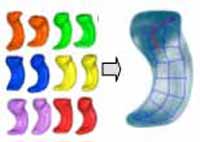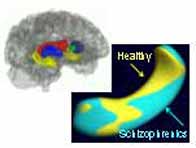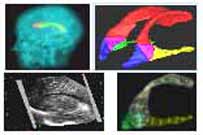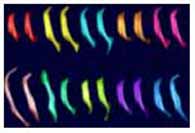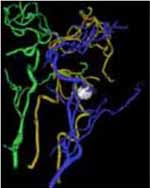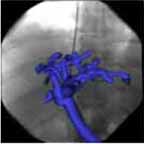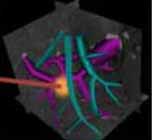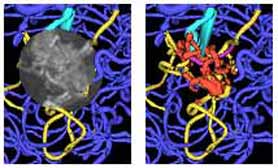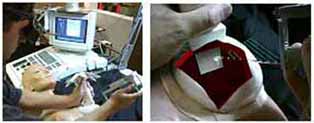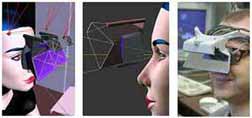In radiation oncology cancerous tumor tissue is to be destroyed by radiation while sparing tissue of nearby normal organs. Planning how to form and aim the radiation beams therefore requires knowing where the tumor and the normal organs in the patient to be treated are. This information as to where the tumor and normal organs are is available in 3D CT or MRI images of the patient but must be extracted from the images to be usable for planning the beams.
M-reps are a form of geometric model that we have invented to represent deformable objects by their interior and to study populations of objects probabilistically. They lead to efficient and effective methods to deform atlases into individual patients measured by their 3D images and thus to extract the organs needed in treatment planning from the patient image. M-reps also allow following individuals as they change shape or measuring the shape differences between well and ill patient classes (see section below)
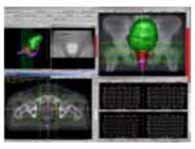
|
PlanUNC,
built by Radiation Oncology based on MIDAG research, is the radiation
treatment planning tool in clinical use there
|
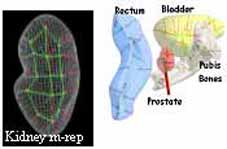
|
As
illustrated in the PlanUNC panel, radiation treatment planning requires
the extraction of anatomic objects, which can be modeled by m-reps
|

Stages of extraction
of kidney from CT in planning treatment of abdominal cancer.
Kidney model thereby deforms into the CT image data

Planning radiation treatment of lung cancer, recognizing breathing motion
